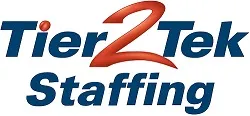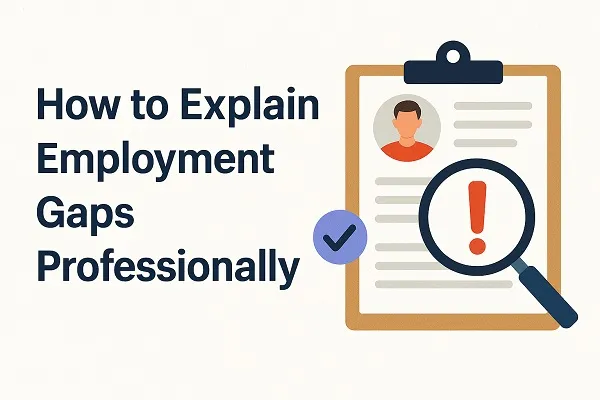How you explain employment gaps professionally can significantly influence how potential employers perceive your career path. Whether you took time off for personal reasons, further education, or unexpected circumstances, presenting these gaps with honesty, clarity, and confidence is key to maintaining credibility and securing job opportunities.
This guide outlines effective strategies for addressing employment gaps in your resume, cover letter, and interviews—without undermining your strengths as a candidate.
Understanding Employment Gaps and Their Impact
An employment gap is any period when a professional is unemployed between jobs. These gaps can be a few months or several years, and they may result from a variety of life events.
Common reasons for employment gaps include:
- Personal health issues or caring for a family member
- Pursuing education or certifications
- Relocation
- Career change or sabbatical
- Layoffs or company restructuring
- Parenting or maternity/paternity leave
While employment gaps are increasingly common and understandable, how you address them matters. Hiring managers want to see responsibility, initiative, and continued personal or professional development during these periods.
When and Where to Explain Employment Gaps
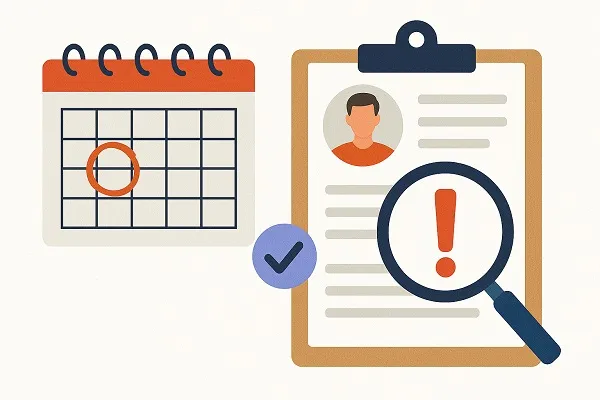
On Your Resume
You don’t need to explain every detail on your resume, but you should address long or recent gaps clearly.
- Use years instead of months if it helps minimize the appearance of short gaps.
- Consider a functional or hybrid resume format to focus on skills and achievements.
- Add a brief explanation in parentheses, e.g., “Parental Leave (2022–2023).”
- Highlight any freelance work, consulting, volunteering, or learning during that time.
In Your Cover Letter
The cover letter is your chance to take control of the narrative.
- Briefly mention the gap if it’s recent or significant.
- Focus on how you stayed active or what skills you developed.
- Emphasize your readiness to return to work and enthusiasm for the role.
Example:
“After taking time to care for a family member in 2023, I am now fully available and eager to contribute my skills to a collaborative, mission-driven team.”
During the Interview
Be prepared to discuss the gap confidently and succinctly.
- Avoid being defensive or overly apologetic.
- Keep your explanation honest but focused on how you’re moving forward.
- Practice your response to ensure it sounds natural and professional.
How to Frame Employment Gaps Positively
Be Honest, But Strategic
You should never fabricate job history or mislead about your employment gaps. However, how you frame the situation makes all the difference.
Instead of:
“I couldn’t find a job for a year.”
Say:
“During this period, I focused on expanding my skills, including taking advanced courses in project management and data analysis.”
Highlight What You Gained
Focus on transferable skills or personal development:
- Completed certifications or online courses
- Gained hands-on experience through volunteer work
- Built a personal project or portfolio
- Developed soft skills like adaptability, time management, or problem-solving
Show Initiative
Employers value candidates who demonstrate initiative, even during downtime. If you stayed active, make that clear:
- Participated in industry webinars or conferences
- Took temporary or contract work
- Contributed to open-source or freelance projects
- Maintained a blog or wrote articles related to your field
Sample Explanations for Common Scenarios
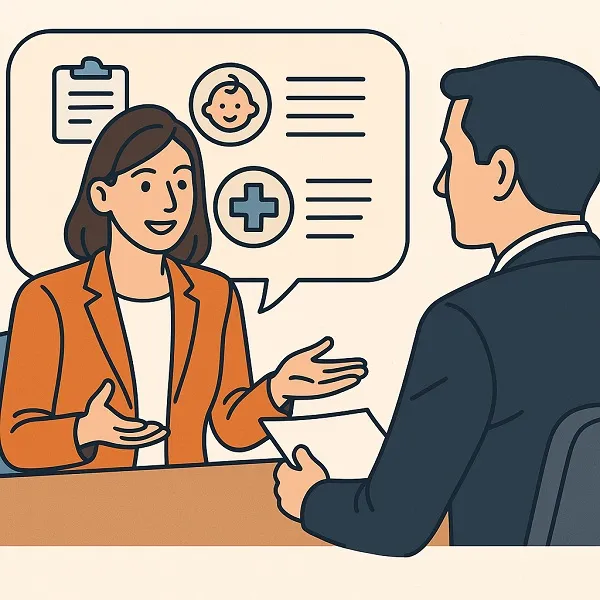
Career Change
“In 2022, I took time off to transition into the UX design field. I completed a certification course, built a portfolio, and worked with small businesses to gain real-world experience.”
Health Issues
“Due to a medical situation, I took a break in 2021. I’ve since fully recovered and am excited to reenter the workforce.”
Family Responsibilities
“From mid-2020 to late 2022, I stepped away from full-time work to care for a family member. During that time, I maintained my professional skills by freelancing and completing relevant coursework.”
Layoff or Company Closure
“My previous role was eliminated during a company restructure in 2023. Since then, I’ve been selective in finding the right next step and have used the time to sharpen my skills.”
Pursuing Freelance or Contract Work
“During 2022, I took on freelance consulting projects for small businesses, which allowed me to stay engaged in my field while having flexibility. This experience sharpened my project management and communication skills.”
Traveling or Taking a Sabbatical
“In 2023, I took a sabbatical to travel and recharge after several years in high-paced corporate roles. This time helped me return with renewed focus and perspective, and I’m now fully energized to contribute to a team environment.”
Relocation
“I relocated from Chicago to Seattle in 2022 due to a family move. During the transition, I focused on settling in and networking locally. I’m now excited to reenter the workforce and contribute to a mission-aligned company.”
Burnout or Mental Health Break
“After many years in demanding roles, I took time off in 2023 to prioritize my mental health and prevent burnout. I used the time to recharge and engage in professional development. I’m now fully ready to return and contribute with clarity and renewed motivation.”
Supporting a Partner’s Career Move
“My partner received an international assignment in 2022, and I chose to take a career break to support the relocation and adjustment process. Now that we’ve settled, I’m re-entering the workforce and bringing fresh perspective and enthusiasm.”
Economic Conditions or Industry Downturn
“My role was impacted during an industry-wide downturn in 2023. Since then, I’ve been focused on updating my skills through online learning and selective job searching to find a role that’s a strong match for my background.”
Tips for Re-Entering the Workforce After a Gap

Getting back into the job market can be intimidating, but it’s absolutely possible with the right approach.
1. Refresh Your Skills
- Take online courses (Coursera, Udemy, LinkedIn Learning)
- Join local workshops or training sessions
- Work on side projects that demonstrate your current expertise
2. Update Your Resume Strategically
- Add a “Professional Development” section
- Include any volunteer, freelance, or consulting roles
- Use action verbs and quantifiable results where possible
3. Rebuild Your Network
- Reach out to former colleagues
- Attend industry meetups or webinars
- Reconnect on LinkedIn and let your network know you’re open to opportunities
4. Prepare Your Story
Craft a clear, concise explanation of your employment gap:
- One to two sentences max
- Avoid oversharing
- Focus on your readiness and enthusiasm
What Hiring Managers Really Want to Know
Hiring professionals aren’t necessarily biased against employment gaps—but they do want reassurance.
Here’s what they’re evaluating:
- Honesty: Are you transparent without oversharing?
- Proactivity: Did you use your time productively?
- Current Value: Are your skills up to date?
- Fit: Do you show genuine interest in the role?
You don’t have to justify your gap in detail. You just need to show that you’re capable, committed, and ready to contribute.
Mistakes to Avoid When Explaining Employment Gaps
- Lying or hiding information: Background checks can uncover the truth.
- Overexplaining: Stick to the essentials.
- Sounding defensive or apologetic: Own your story with confidence.
- Blaming previous employers: Stay professional, even if you were treated unfairly.
- Being unprepared: Practice your explanation to avoid being caught off guard.
Crafting a Resume That Works for You
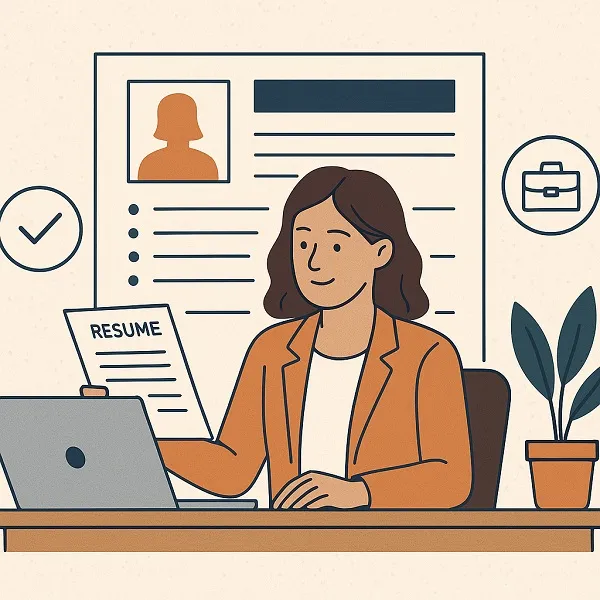
If you’re dealing with multiple or long gaps, consider formatting adjustments to highlight your strengths.
Functional resume format:
- Focuses on skills and achievements
- Lists work history with minimal dates
Combination (hybrid) format:
- Blends skills-based and chronological structure
- Minimizes focus on gaps while retaining timeline clarity
Tips:
- Use headers like “Freelance Projects,” “Volunteer Experience,” or “Professional Development”
- Group short gigs together under one role if applicable
- Avoid drawing unnecessary attention to the gap
A career is rarely a straight path. What matters most is how you present your journey. When you explain employment gaps professionally—with honesty, confidence, and a focus on growth—you demonstrate not just competence but resilience. And that’s a quality every employer values.
Content reviewed and published by Tier2Tek Staffing Editorial Team .
